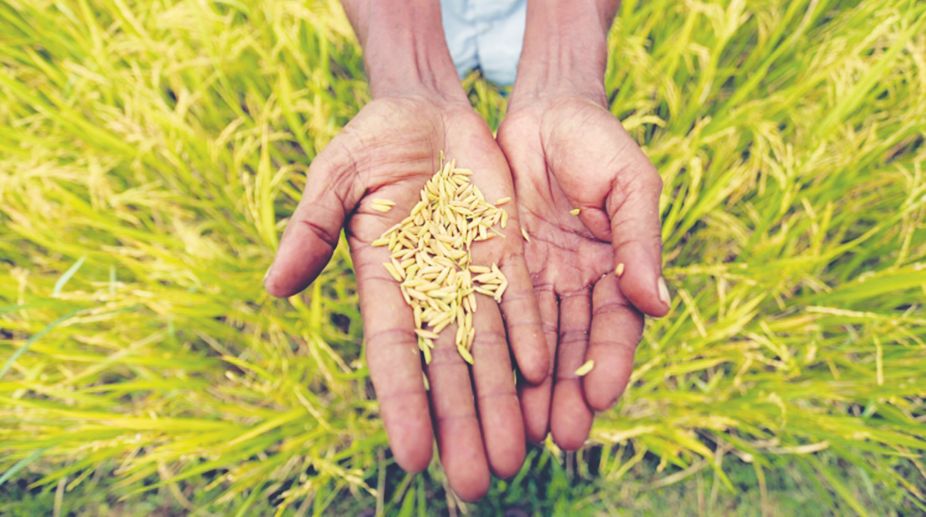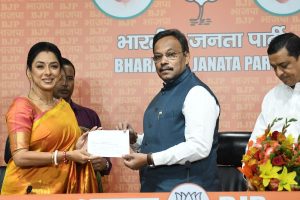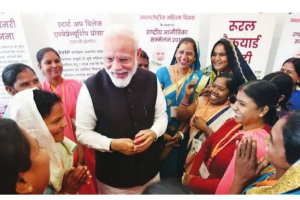At a national symposium on increasing rice yields in Kharif (Monsoon season) held at CRRI, Cuttack on February 8-11, 1978, rice workers agreed that “the time is now ripe to redefine the term High Yielding Variety (HYV) as a high yielding variety for a particular environment possessing suitable plant-type characters for that condition which may not be suitable for other environments. A (rice) variety irrespective of its plant and/stature giving significantly higher yield over the local or regional average yield under farmer’s condition may be defined as a high yielding variety (HYV).”
To emphasise the point, the Directorate of Rice Development, Govt. of India, had issued a paper entitled ‘Need for a National Policy on Rice’ (1972) and concluded, “The new varieties of rice should be as good as the (current varieties) older ones in local adaptability and some characteristics but not inferior in any character. It is our experience that when we try to recommend a variety which is a compromise between a high yield and some other character in which the local (older) varieties are superior than we run into trouble. We should not over-emphasise yield but should insist upon a minimum aroma and cooking quality as rice is the only cereal which is directly consumed without much change in the form of its grain.”
Dr. Richharia recommended, “It is high time that the country’s 1964-65 breeding programme which nearly stands suspended to exploit the indigenous rice germplasm, is also resumed in the light of the observations, recorded above, when about 445 improved varieties, bred for specific stress situations, showing environmental resistance to diseases and pests were available, and would be still available, in the country. It is not too late, and the strategy formulated in this programme, mainly based on our rice genetic resources may be accepted which also contemplates that the indigenous germplasm in its hybridized form (hybrid rice) has also bright future to enhance rice productivity.”
Selection work (genetic upgrading) with indigenous rice types was resumed by Dr. Richharia in 1968 after leaving Cuttack. “About 1,500 improved types (improved versions) and eleven composites were developed and made available by 1978 selected from about 7,800 principal indigenous rice cultivars. As approach was to release this hidden production force which remains unnoticed, unrecognised and confined to certain localities with individual growers.
“For high yield potential genetic upgrading of their adapted rice varieties (indigenous rice germplasm), with certain manipulation, such as the evolution of new hybrids and exploiting hybrid vigorous utilizing pure material of local types, is the only course left for speedy recovery of loss, to stabilise rice production at a higher level, instead of waiting to replace our rice by other rice material of doubtful nature which may or may not get adapted to stabilise yields in the environments under which rice grows in variable situations in India.”
In research as well as extension, Dr. Richharia recommended a decentralised approach. This, he emphasised, is inherent to the rice plant. To quote, “If we were to think of a single characteristic feature of the rice plant which yields food for millions, it cannot be anything else but its variability in the form of thousands of its cultivars, spread in India and in other rice growing belts of the world. This is because of the rice plant’s flexible genetic make-up and mutational power of adaptation.” So, he recommended the establishment of a wide network of “adaptive rice centres” in all rice- growing areas.
“The adaptive rice centres will be the custodian of all local rice cultivars in respective localities, assembled immediately, supplemented if necessary, by the already available materials of the locality at different research centres. They will be maintained under their natural habitat to safeguard the future. They will be known as local treasuries of rice germplasm, (a term suggested by Dr. Frankel of Australia).”
The function of the centres would be:
(a) To maintain the evolved rice genetic material for future studies and use as it is practically impossible to retain it in its original form at a central place in India or abroad. It can only be maintained in its original condition at its natural habitat seeking help of the rice growers themselves.
(b) To educate young farmers to appreciate the value and importance of their own material adding new ones as their hobby.
On the basis of his wide experience, Dr. Richharia said: “Invariably I found in rice areas several rice growers taking keen interest in their local rice varieties as they are very much absorbed in them and they have all praise for them, so much so that they trace back the history of individual rice varieties to their ancestry with their utility and such selected and devoted rice farmers will be put in charge of the centres.
I also observed that some of them identify their rice varieties in their own way (not in terms of the modern knowledge of Botany) which amount to thousands. This inherent and intuitional facility of selection and maintenance of thousand of rice cultivars gradually being accumulated and descended upon for unknown centuries, ever since rice first originated must be preserved and exploited for the advantage of the present generation and to ensure the safety of those still unborn.
“On the practical side a beginning may be made in M.P. where upgrade material already exists in the form of about 1,500 improved types made from growers’ own rice cultivars which can be distributed in different centres for work to be started immediately, to obtain advantage as early as possible and to prepare the hybrid material for the next season.”
Based on his experience in Madhya Pradesh, Dr. Richaria stressed that women would prove to be the most important link in introducing this technology. At Adaptive Rice Research Centre in Baronda, Dr. Richaria noticed that women workers absorb new methods and ideas very quickly.
Here he had specially promoted some women workers as supervisors for managing the germplasm of over 17,000 rice cultivars in the field and the practice of clonal propagation.
For rapidly spreading improved upgraded varieties and for exploiting their hybrid vigour, clonal propagation technique can give very good results.
“It will also be demonstrated that the healthy seeds, obtained by clonal propagation for a full crop of rice to follow, give nearly 20% higher production for any rice variety.” Further hybrid clones for exploiting hybrid vigour can be obtained. Hybridization work would be carried out by trained field workers of the adaptive centres.
“Whereas clonal propagation in rice as a mean of raising pure seeds to offer 20 per cent higher production and the extension of this technology to exploit hybrid vigour to obtain 50 per cent increased yields, remain unexploited, a great discovery of immense value is left unheeded, in the form of 19,000 rice cultivars coupled with their 1,500 improved versions representing intense variability, assembled from the least understood rice areas of M.P. (Chattisgarh, Bastar, Abhujmal tracts etc. inhabited mostly by tribals.”
In large parts of the country, the rice crop is ruined by either drought or flood conditions. In this context Dr. Richaria’s plan is invaluable as it incorporates resistance to floods as well as drought conditions, not to mention disease and pest invasions.
Dr. Richharia’s documents of the days of his work at Raipur mention the several drought-resistant indigenous varieties discovered in the course of fieldwork in Chattisgarh region, and above all the immense diversity of the rice varieties grown.
The advantage of this in distress situations such as drought is that while some varieties suffer, others survive and yield doesn’t go below a certain level. In flood situations, the clonal propagation method offers special advantages. It has been demonstrated that rice clones show resistance to submergence.
Dr. Richharia expressed his support for organic farming and several local practices of farmers. He wrote that under this plan, “the agronomic practices such as biasi, rotation of crops, mixed cropping will remain common and will not be disturbed, emphasis being on the use of organic manures, such as compost, green manure, neem cakes and oil cakes etc.”
Dr. Richharia attached 17 documents based on his earlier research to support his plan while submitting it to the then Prime Minister. In addition, he mentioned his Encyclopedia of Rice Cultivars on which he was working. He also offered his services on an honorary basis for implementing this plan.
The collections of improved rice varieties he mentioned (mostly arising from his own work and the work of his colleagues) may not be available today in the way they were when this plan was prepared. Similarly, the knowledge of indigenous varieties in villages may be comparatively less now. This however makes it incumbent to not delay implementation of this plan any further as with the passage of time the neglect and loss of indigenous varieties may make such tasks and initiatives even more difficult.
Concluded.
The writer is a freelance journalist who has been involved with several social
movements and initiatives.











